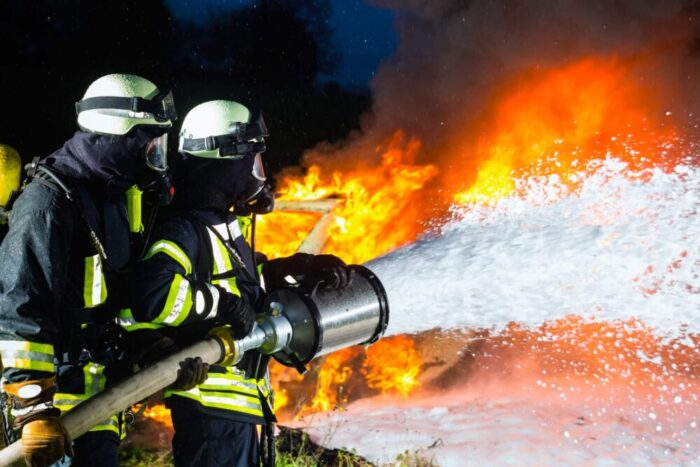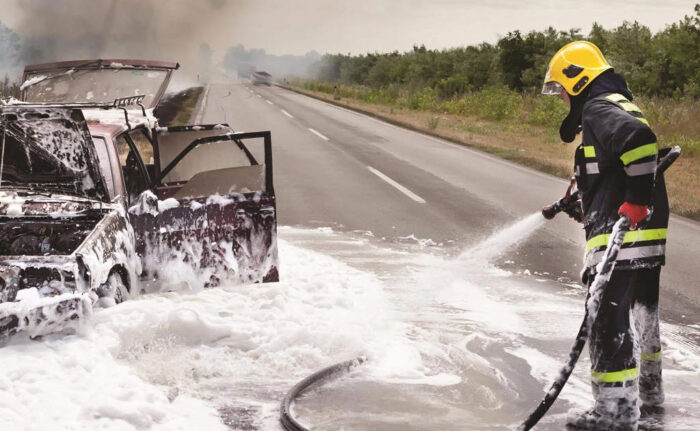
Communities nationwide confront the aftermath of PFAS, synthetic chemicals in firefighting foam, raising environmental and health concerns. These chemicals, linked to a range of serious health problems, have contaminated groundwater, soil, and even the bodies of countless individuals.
As the public becomes increasingly aware of the PFAS crisis, a wave of lawsuits has emerged seeking compensation for individuals harmed by exposure. In this article, we will explore the complexities of AFFF litigation, specifically focusing on identifying individuals who may be eligible to seek compensation.
Understanding AFFF Exposure
Research conducted by environmental agencies has identified elevated PFAS levels in water in the US. A study by the CDC found that PFAS was present in the blood of over 98% of Americans tested. These findings underscore the urgency of understanding toxic foam exposure and its potential ramifications for affected individuals.
A crucial aspect of AFFF lawsuits centers around comprehending the extent of exposure individuals have had to this firefighting foam. Fire-extinguishing foam containing PFAS has been linked to various health issues and environmental contamination. Exposure can occur through direct contact during firefighting efforts and indirect routes such as contaminated water sources.
It is important to note that the health effects of PFAS exposure are still being studied. However, its exposure has been linked to several health problems. According to TorHoerman Law, these health conditions include cancer, thyroid disease, liver damage, immune system dysfunction, reproductive issues, and developmental problems.
AFFF Lawsuit Criteria

Determining eligibility for AFFF lawsuits involves specific criteria that potential litigants must meet. Firstly, individuals adversely affected by health issues associated with toxic foam exposure are prime candidates. It includes instances where a diagnosed medical condition can be reasonably attributed to exposure.
Also, residents living in proximity to sites with documented foam usage and those whose water sources show elevated PFAS levels may qualify. Environmental impact, such as contaminated soil or water, is another key eligibility criterion.
Analysis of the lawsuit criteria reveals a growing trend in legal actions. Risk Management Magazine reveals a surge in PFAS-related filings from dozens in 2019 to hundreds in 2021 and 2022. Recent court and regulatory actions have intensified focus on PFAS, foreshadowing a significant increase in lawsuits against numerous companies.
This surge underscores the mounting recognition of toxic foam’s adverse effects, prompting affected individuals to seek legal recourse.
Legal Recourse for AFFF Exposure
The widespread use of firefighting foam for decades has resulted in significant environmental contamination and potential health consequences across the US. This exposure happens through firefighting contact, inhaling PFAS fumes, or consuming contaminated water or food, posing multifaceted health risks. Persistent PFAS, found in the foam, linger in the environment and accumulate in the human body, posing potential health risks.
Individuals who have suffered harm due to exposure to firefighting foam have the right to seek legal recourse. If the exposure led to health issues, seeking legal counsel is vital for rightful compensation and navigating potential lawsuits. AFFF foam lawsuit provides a pathway for individuals to hold manufacturers accountable for the harm they have caused.
AFFF foam lawsuit typically revolves around proving a causal link between exposure and the resulting health issues or environmental contamination. Legal teams often rely on scientific evidence, medical records, and environmental assessments to establish this connection. Successful cases have led to compensation for medical expenses, property damage, and other losses incurred due to the exposure.
Steps to Take for Filing an AFFF Lawsuit

To build a compelling case after AFFF exposure, meticulously document instances and record dates, locations, and impacts on health or property. Consult healthcare professionals for medical evaluation, obtaining records establishing the link between exposure and health effects. Collect environmental data, including water and soil testing, to strengthen your case with evidence of contamination.
Identify responsible parties, such as firefighting agencies or industrial sites, crucial for direct legal action. Consult experienced legal experts in environmental and personal injury law for guidance and assessment. Consider joining a class-action lawsuit or filing an individual suit based on your circumstances for personalized representation and tailored arguments.
By methodically adhering to these steps, individuals enhance their ability to file well-supported cases, improving the chance for just compensation.
Recent Developments and Settlements
The Hill reported a tentative $10 billion settlement by 3M with public water systems over “forever chemical” contamination. It resolves water providers’ claims against the firm. This landmark agreement signifies a growing recognition of the responsibility borne by entities employing firefighting foam.
Also, JD Supra reported a significant development in the legal proceedings. The MDL judge overseeing federal AFFF cancer litigation issued a case management order, setting the roadmap for upcoming bellwether trials. The order establishes a schedule for selecting representative cases, offering insights into scientific and legal arguments concerning AFFF-related cancer claims.
AFFF’s adverse effects necessitate urgent attention in the evolving legal landscape, offering precedent and motivation for individuals seeking legal recourse. Amid ongoing legal repercussions, these insights from evolving developments provide valuable guidance for individuals navigating the litigation landscape.
Legal Support and Resources

Numerous resources exist to aid those seeking justice for AFFF-related health issues and environmental impacts. Legal clinics specializing in environmental law and personal injury cases provide valuable assistance.
Also, non-profit organizations and advocacy groups offer informational resources, legal guidance, and even pro bono assistance for qualifying individuals. These initiatives aim to empower affected communities, ensuring they are well informed about their legal rights and options.
In the changing litigation landscape, legal support networks are indispensable allies for individuals holding accountable those responsible for exposure consequences.
Navigating the AFFF Legal Landscape
Uncovering AFFF lawsuits demands a nuanced understanding of exposure, health impacts, and environmental repercussions. Ongoing legal shifts emphasize pursuing justice for those affected. Data trends show a surge in legal actions and settlements, signaling a paradigm shift. The quest for the truth behind exposure requires collective efforts, and the legal landscape remains pivotal in this ongoing saga of revelations.
















